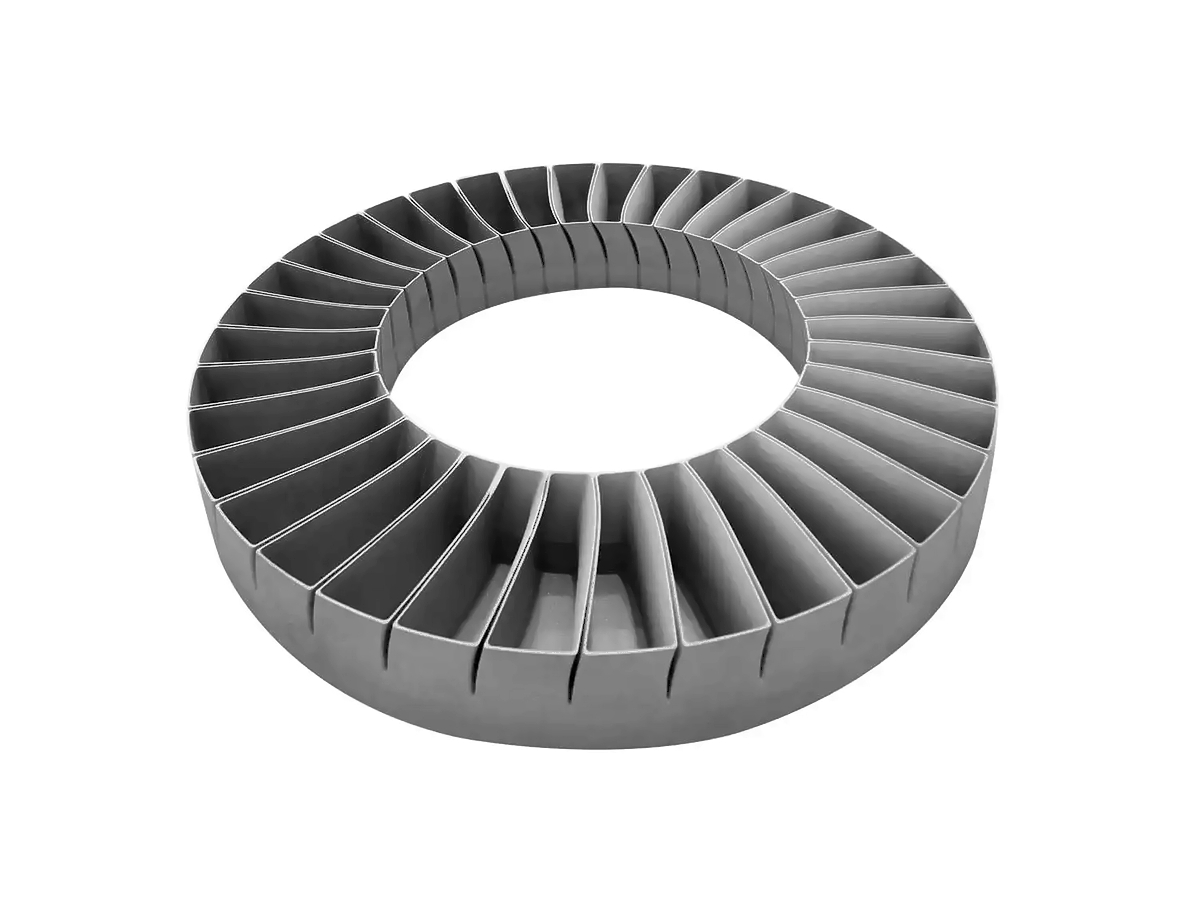Titanium 3D Printing: Lightweight, Strong, and Corrosion-Resistant Components
Introduction to Titanium 3D Printing
Titanium is known for its outstanding properties, including a high strength-to-weight ratio, exceptional corrosion resistance, and the ability to withstand high temperatures. These qualities make titanium ideal for demanding industries such as aerospace, medical devices, automotive, and marine. Titanium 3D printing can create complex geometries and customized components with high precision. Using advanced technologies like Direct Metal Laser Sintering (DMLS) and Selective Laser Melting (SLM), titanium parts are produced with superior performance and durability.
At Neway 3D Printing, we provide high-quality titanium 3D printing services, utilizing titanium alloys such as Ti-6Al-4V, Ti-13V-11Cr-3Al, and Ti-6Al-2Sn-4Zr-6Mo to produce lightweight, strong, and corrosion-resistant components for industries like aerospace, medical, and automotive. Our titanium alloys are tailored to meet the most stringent performance and durability requirements.
Material Performance Matrix
Material | Temperature Resistance (°C) | Corrosion Resistance (ASTM B117 Salt Spray) | Wear Resistance (Pin-on-Disc Test) | Ultimate Tensile Strength (MPa) | Yield Strength (MPa) | Application |
|---|---|---|---|---|---|---|
800 | Excellent (2000 hours) | High (Coefficient of friction: 0.6) | 1100 | 880 | Aerospace, Medical Implants | |
950 | Very Good (1000 hours) | High (CoF: 0.4) | 1150 | 970 | Aerospace, High-Temperature Applications | |
980 | Excellent (3000 hours) | Very High (CoF: 0.35) | 1200 | 950 | Aerospace, Gas Turbine Engines | |
850 | Good (600 hours) | Medium (CoF: 0.8) | 1000 | 850 | Aerospace, Structural Components |
Material Selection Guide for Titanium 3D Printing
When selecting titanium materials for 3D printing, the following key factors should be considered:
Temperature Resistance: For applications exposed to high heat, materials like Ti-6Al-4V (Grade 5) (800°C) and Ti-13V-11Cr-3Al (TC11) (950°C) are ideal.
Corrosion Resistance: Ti-6Al-4V and Ti-6Al-2Sn-4Zr-6Mo provide outstanding protection for environments requiring superior corrosion resistance, especially in medical and aerospace applications.
Wear Resistance: Titanium alloys such as Ti-6Al-4V (Grade 5) and Ti-13V-11Cr-3Al (TC11) offer excellent wear resistance, making them suitable for parts exposed to high friction, such as engine components.
Strength Requirements: For parts requiring exceptional strength, Ti-6Al-2Sn-4Zr-6Mo offers a higher tensile strength (1200 MPa), making it suitable for high-performance applications in aerospace and gas turbines.
Process Category Matrix for Titanium 3D Printing
Process | Material Compatibility | Build Speed | Precision | Surface Finish |
|---|---|---|---|---|
Ti-6Al-4V, Ti-13V-11Cr-3Al, Ti-6Al-2Sn-4Zr-6Mo | Moderate (30-60 mm/h) | High (±0.1mm) | Smooth to Fine | |
Ti-6Al-4V, Ti-13V-11Cr-3Al | High (50-100 mm/h) | Very High (±0.05mm) | Fine (Ra < 10 µm) | |
Ti-6Al-4V, Ti-13V-11Cr-3Al | Low (5-25 mm/h) | High (±0.1mm) | Rough (Ra > 20 µm) | |
Ti-6Al-4V, Ti-6Al-2Sn-4Zr-6Mo | High (50-100 mm/h) | Very High (±0.05mm) | Fine (Ra < 10 µm) |
Process Performance Insights:
Powder Bed Fusion (PBF): Suitable for creating intricate geometries with moderate build speed. This process is ideal for parts that need detailed surface finishes and precision. Commonly used in medical implants and aerospace components.
Direct Metal Laser Sintering (DMLS): Offers high precision and excellent surface finish (Ra < 10 µm). DMLS is the best choice for parts requiring tight tolerances, such as complex aerospace components and lightweight medical parts.
Electron Beam Melting (EBM): Best for high thermal resistance applications, especially in aerospace and energy sectors. The process results in a rougher surface finish, but it offers high material strength and is perfect for critical load-bearing parts.
Selective Laser Melting (SLM): Provides high-speed production with exceptional precision. The process is used for structural aerospace components and high-performance engine parts, ensuring both strength and high detail.
Process Selection Guide for Titanium Parts
Powder Bed Fusion (PBF): Ideal for detailed parts with intricate geometries and high precision, especially in medical and aerospace applications.
Direct Metal Laser Sintering (DMLS): Best suited for parts requiring high accuracy and smooth surfaces. This process is often chosen for lightweight medical implants and aerospace components.
Electron Beam Melting (EBM): Suitable for high-strength parts exposed to high thermal conditions, typically used in critical aerospace and energy applications.
Selective Laser Melting (SLM): Offers high-speed production for large and highly complex parts, commonly used in aerospace and automotive industries.
Case In-Depth Analysis: Titanium 3D-Printed Aerospace Components
Aerospace Industry: We manufactured lightweight, high-strength brackets for an aerospace company using Ti-6Al-4V through DMLS. These parts needed to withstand high temperatures and provide excellent fatigue resistance. The DMLS process allowed us to produce complex internal geometries to reduce weight while maintaining the strength required for the application.
Medical Industry: We created custom Ti-6Al-4V implants using SLM for a medical implant company. The parts required exceptional corrosion resistance and strength for use in the human body. The SLM process enabled precise control over material properties, resulting in optimal strength, biocompatibility, and longevity implants.
FAQs
What are the advantages of using titanium in 3D printing for aerospace?
How does Selective Laser Melting (SLM) compare to other titanium 3D printing methods?
What is the best titanium alloy for medical implants?
How can 3D printing with titanium improve manufacturing efficiency?
What are the key industries that benefit from titanium 3D printed parts?

